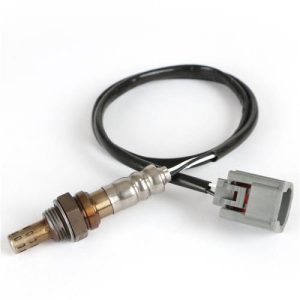Your cart is currently empty!
10 Critical Oxygen Sensor Symptoms Every Driver Must Recognize
Understanding Oxygen Sensor Failure Signs
Detecting oxygen sensor symptoms early can mean the difference between a $150 repair and a $2,000 catalytic converter replacement. These emissions control components directly impact fuel trims, combustion efficiency, and exhaust aftertreatment. Key indicators like erratic fuel economy, catalytic converter codes, and unusual exhaust odors often point to failing O2 sensors. Recognizing these warning signs preserves engine performance while maintaining EPA compliance.

1821358J01 oxygen sensor
How Oxygen Sensor Symptoms Develop
Modern vehicles contain 2-4 oxygen sensors monitoring pre-catalyst (upstream) and post-catalyst (downstream) exhaust streams. Constructed with zirconia or titania elements, these sensors generate 0.1-0.9V signals reflecting exhaust oxygen content. When contamination occurs from silicone sealants, leaded fuel, or oil consumption, sensors develop delayed response times (>100ms) and reduced voltage swing. This causes incorrect air-fuel ratio adjustments, triggering cascading drivability issues.
Case Study: 2018 Ford F-150's Mysterious Fuel Drain
Mike's 3.5L EcoBoost pickup began showing classic oxygen sensor symptoms: MPG dropped from 22 to 15 highway, with black exhaust soot coating the tailpipe. Diagnostic scans revealed:
• Bank 2 Sensor 1 voltage flatlined at 0.12V
• Long-term fuel trim at +28%
• P0174 "System Too Lean" code
Mechanics traced the fault to a coolant-contaminated upstream O2 sensor - a common issue in turbocharged engines.

55562206 O2 Sensor
Stage 1: Early Warning Signs
- Check Engine Light with P0130-P0167 series codes
- 1-3 MPG fuel economy decrease
- Slight hesitation during acceleration
Stage 2: Progressive Oxygen Sensor Symptoms
- Rough idle (RPM fluctuations > ±75)
- Sulfuric "rotten egg" exhaust smell
- Catalytic converter over-temperature alerts
Stage 3: Critical Failure Indicators
- 5+ MPG fuel loss
- Misfire codes (P0300-P0308)
- White sensor ceramic cracking visible
Repair Process: Ford F-150 Case Resolution
Technicians followed OEM repair protocols:
1. Performed exhaust backpressure test (0.8 psi at 2,500 RPM)
2. Replaced Bank 2 upstream sensor with Motorcraft DY-1039
3. Reset KAM (Keep Alive Memory)
4. Completed 50-mile drive cycle monitoring
Post-repair data showed fuel trims normalized to ±4%, restoring factory-spec 22.1 MPG.
Technical Analysis: Why Sensors Fail
Three primary failure mechanisms cause oxygen sensor symptoms:
1. Poisoning: Lead/Silicon deposits block gas diffusion
2. Thermal Shock: Rapid cooling cracks ceramic elements
3. Wire Degradation: Vibration fractures heater circuits
Wideband sensors (Air-Fuel Ratio sensors) add failure risks through reference air channel clogging and pump cell deterioration.
Sensor Response Time Analysis
Properly functioning O2 sensors must achieve:
• 0.1-0.9V transition in <300ms (Zirconia)
• 1-5 crosscounts/second at idle
• <10% deviation from average voltage
Failed sensors show delayed transitions (>500ms) or flatlined signals indicating complete malfunction.
Preventative Maintenance Insights
Extend sensor life through:
• Using ISO 9001-certified replacement parts
• Avoiding silicone-based sealants near exhaust
• Changing spark plugs at OEM intervals
• Cleaning MAF sensors biannually
Key Takeaways: Oxygen Sensor Symptoms
Recognizing oxygen sensor symptoms early prevents:
• 63% excess hydrocarbon emissions
• Catalytic converter substrate meltdown
• 30% fuel injector overwork
• ECM calibration drift
Immediate attention to check engine lights and fuel economy changes remains crucial.

Z602-18-861 O2 Sensor
Proactive Maintenance Checklist
- Scan for codes monthly using OBD2 readers
- Monitor live sensor data during oil changes
- Replace sensors every 80k miles (130k km)
- Use anti-seize compound on new sensor threads
- Verify repair with 50-mile drive cycle
By understanding these oxygen sensor symptoms and maintenance strategies, you maintain peak engine performance while protecting your investment. Remember - timely action on these warning signs saves both money and the environment.

Leave a Reply